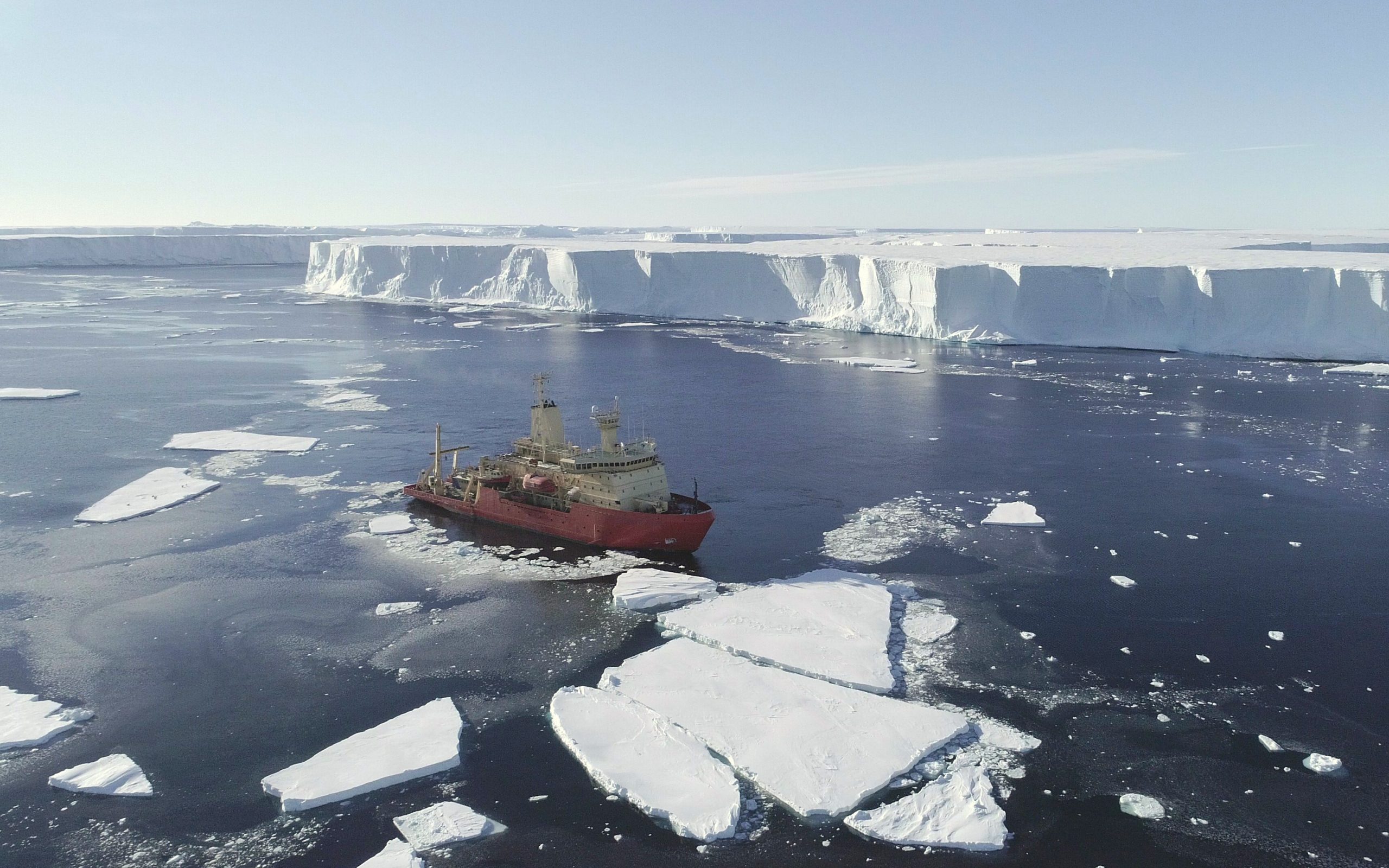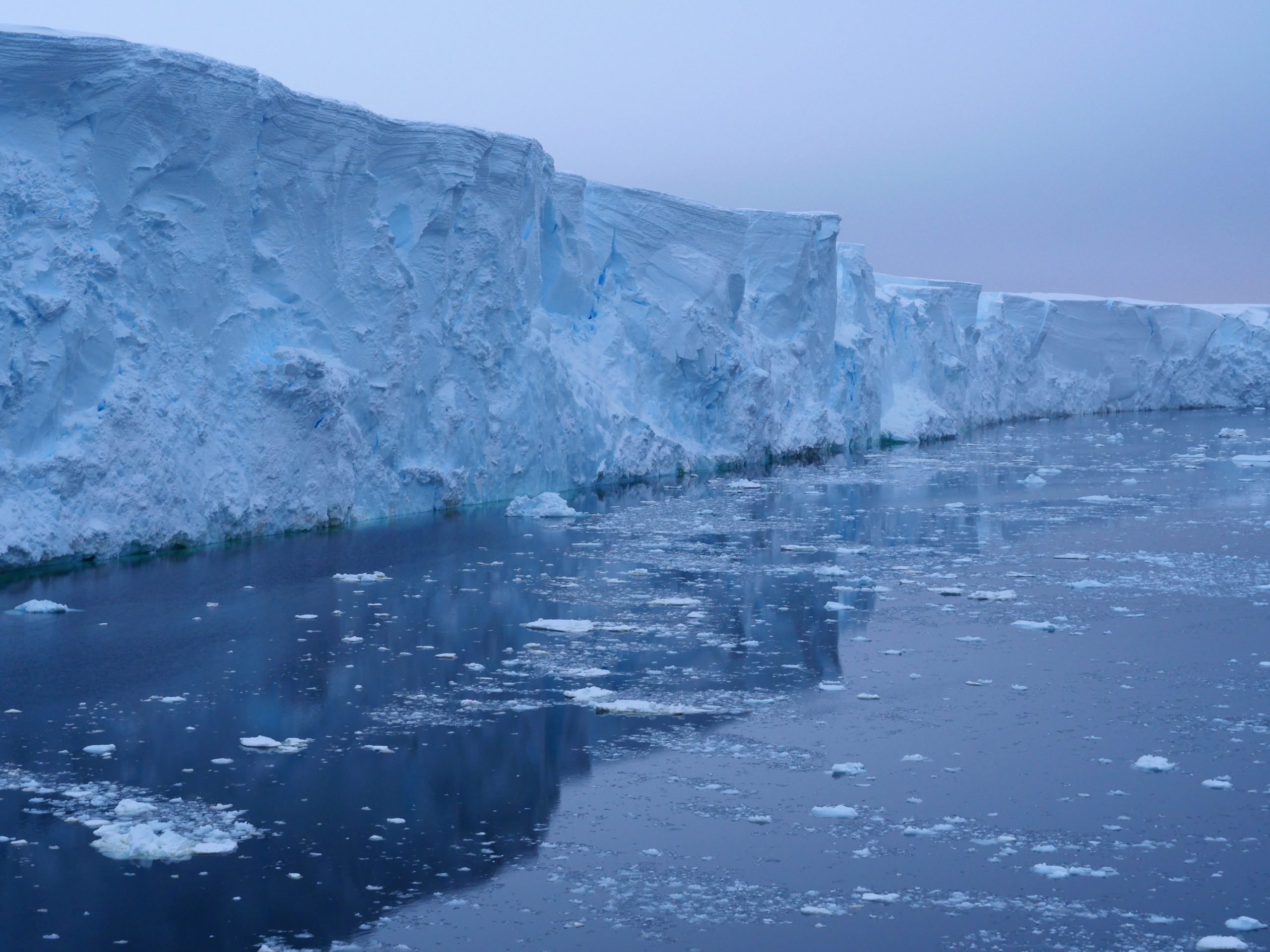A new international study sheds light on the future of the massive Thwaites Glacier and other ice sheets.
The world’s largest ice sheets may be in less danger of sudden collapse than previously predicted, according to new findings led by the University of Michigan, in partnership with the University of St Andrews as part of the International Thwaites Glacier Collaboration.
The team of international researchers have simulated the demise of one of the world’s largest and most unstable glaciers, Thwaites Glacier in West Antarctica.

Thwaites Glacier covers 192,000 square kilometers, the size of the US state of Florida or Great Britain, and is particularly susceptible to climate change.
The new findings, published in Science, add nuance to a previous theory called marine ice cliff instability, which suggested that if the height of an ice cliff reaches a certain threshold, it can suddenly disintegrate under its own weight in a chain reaction of ice fractures.
Lead researcher, Associate Professor, Jeremy Bassis, from the University of Michigan, said: “What we found is that over long timescales, ice behaves like a viscous fluid, sort of like a pancake spreading out in a frying pan. So, the ice spreads out and thins faster than it can fail and this can stabilize collapse. But if the ice can’t thin fast enough, that’s when you have the possibility of rapid glacier collapse.”
The research team also found that icebergs that crack and fall away from the main glacier in a process known as “iceberg calving” may stave off, rather than contribute to, catastrophic collapse.
Over the past 30 years, the overall rate of ice loss from Thwaites and its neighbouring glaciers has increased more than five-fold.


But Bassis notes that even if the glacier doesn’t catastrophically collapse, exposing a tall cliff could still trigger retreat at a few kilometres per year – equal to the length of about 20 football fields and resulting in a large contribution to future sea level rise.
But predicting the retreat of glaciers is a mind-bendingly complex business, as they are affected by the interplay of myriad factors: the stress and strain of billions of tons of shifting ice, changing air and water temperatures and the effects of flowing liquid water on ice, to name just a few.
As a result, the predictions for the collapse of the Thwaites Glacier range from a few decades to many centuries.
Bassis explains: “There’s no doubt that sea levels are rising, and that it’s going to continue in the coming decades.
“But I think this study offers hope that we’re not approaching a complete collapse – that there are measures that can mitigate and stabilize things.
“And we still can change things by making decisions about things like energy emissions, methane and CO2.
“The ocean is always there, sort of tickling the ice in a very complex way, and we’ve only known for a decade or two just how important it is, but we’re beginning to understand that it’s driving a lot of the changes we’re seeing, and I think that’s going to be the next big frontier in our research.”

